Plot various test-implied functions from models
Source:R/MultipleGroup-methods.R, R/SingleGroup-methods.R
plot-method.RdPlot various test implied response functions from models estimated in the mirt package.
Usage
# S4 method for class 'MultipleGroupClass,missing'
plot(
x,
y,
type = "score",
npts = 200,
drop2 = TRUE,
degrees = 45,
which.items = 1:extract.mirt(x, "nitems"),
rot = list(xaxis = -70, yaxis = 30, zaxis = 10),
facet_items = TRUE,
theta_lim = c(-6, 6),
par.strip.text = list(cex = 0.7),
gen.diff_type = "IRF",
par.settings = list(strip.background = list(col = "#9ECAE1"), strip.border = list(col =
"black")),
auto.key = list(space = "right", points = FALSE, lines = TRUE),
...
)
# S4 method for class 'SingleGroupClass,missing'
plot(
x,
y,
type = "score",
npts = 200,
drop2 = TRUE,
degrees = 45,
theta_lim = c(-6, 6),
which.items = 1:extract.mirt(x, "nitems"),
gen.diff_type = "IRF",
MI = 0,
CI = 0.95,
rot = list(xaxis = -70, yaxis = 30, zaxis = 10),
facet_items = TRUE,
main = NULL,
drape = TRUE,
colorkey = TRUE,
ehist.cut = 1e-10,
add.ylab2 = TRUE,
par.strip.text = list(cex = 0.7),
par.settings = list(strip.background = list(col = "#9ECAE1"), strip.border = list(col =
"black")),
auto.key = list(space = "right", points = FALSE, lines = TRUE),
profile = FALSE,
...
)Arguments
- x
an object of class
SingleGroupClass,MultipleGroupClass, orDiscreteClass- y
an arbitrary missing argument required for
R CMD check- type
type of plot to view. Can be
'info'test information function
'rxx'for the reliability function
'infocontour'for the test information contours
'SE'for the test standard error function
'infotrace'item information traceline plots
'infoSE'a combined test information and standard error plot
'trace'item probability traceline plots
'itemscore'item scoring traceline plots
'score'expected total score surface
'scorecontour'expected total score contour plot
'posteriorTheta'posterior for the latent trait distribution
'gen.difficulty'plots items by generalized difficulty estimates (see
gen.difficulty)'EAPsum'compares sum-scores to the expected values based on the EAP for sum-scores method (see
fscores)
Note that if
dentype = 'empiricalhist'was used in estimation then the type'empiricalhist'also will be available to generate the empirical histogram plot, and ifdentype = 'Davidian-#'was used then the type'Davidian'will also be available to generate the curve estimates at the quadrature nodes used during estimation- npts
number of quadrature points to be used for plotting features. Larger values make plots look smoother
- drop2
logical; where appropriate, for dichotomous response items drop the lowest category and provide information pertaining only to the second response option?
- degrees
numeric value ranging from 0 to 90 used in
plotto compute angle for information-based plots with respect to the first dimension. If a vector is used then a bubble plot is created with the summed information across the angles specified (e.g.,degrees = seq(0, 90, by=10))- which.items
numeric vector indicating which items to be used when plotting. Default is to use all available items
- rot
allows rotation of the 3D graphics
- facet_items
logical; apply grid of plots across items? If
FALSE, items will be placed in one plot for each group- theta_lim
lower and upper limits of the latent trait (theta) to be evaluated, and is used in conjunction with
npts- par.strip.text
plotting argument passed to
lattice- gen.diff_type
argument passed to
typeingen.difficulty- par.settings
plotting argument passed to
lattice- auto.key
plotting argument passed to
lattice- ...
additional arguments to be passed to lattice
- MI
a single number indicating how many imputations to draw to form bootstrapped confidence intervals for the selected test statistic. If greater than 0 a plot will be drawn with a shaded region for the interval
- CI
a number from 0 to 1 indicating the confidence interval to select when MI input is used. Default uses the 95% confidence (CI = .95)
- main
argument passed to lattice. Default generated automatically
- drape
logical argument passed to lattice. Default generated automatically
- colorkey
logical argument passed to lattice. Default generated automatically
- ehist.cut
a probability value indicating a threshold for excluding cases in empirical histogram plots. Values larger than the default will include more points in the tails of the plot, potentially squishing the 'meat' of the plot to take up less area than visually desired
- add.ylab2
logical argument passed to lattice. Default generated automatically
- profile
logical; provide a profile plot of response probabilities (objects returned from
mdirtonly)
References
Chalmers, R., P. (2012). mirt: A Multidimensional Item Response Theory Package for the R Environment. Journal of Statistical Software, 48(6), 1-29. doi:10.18637/jss.v048.i06
Examples
# \donttest{
x <- mirt(Science, SE=TRUE)
plot(x)
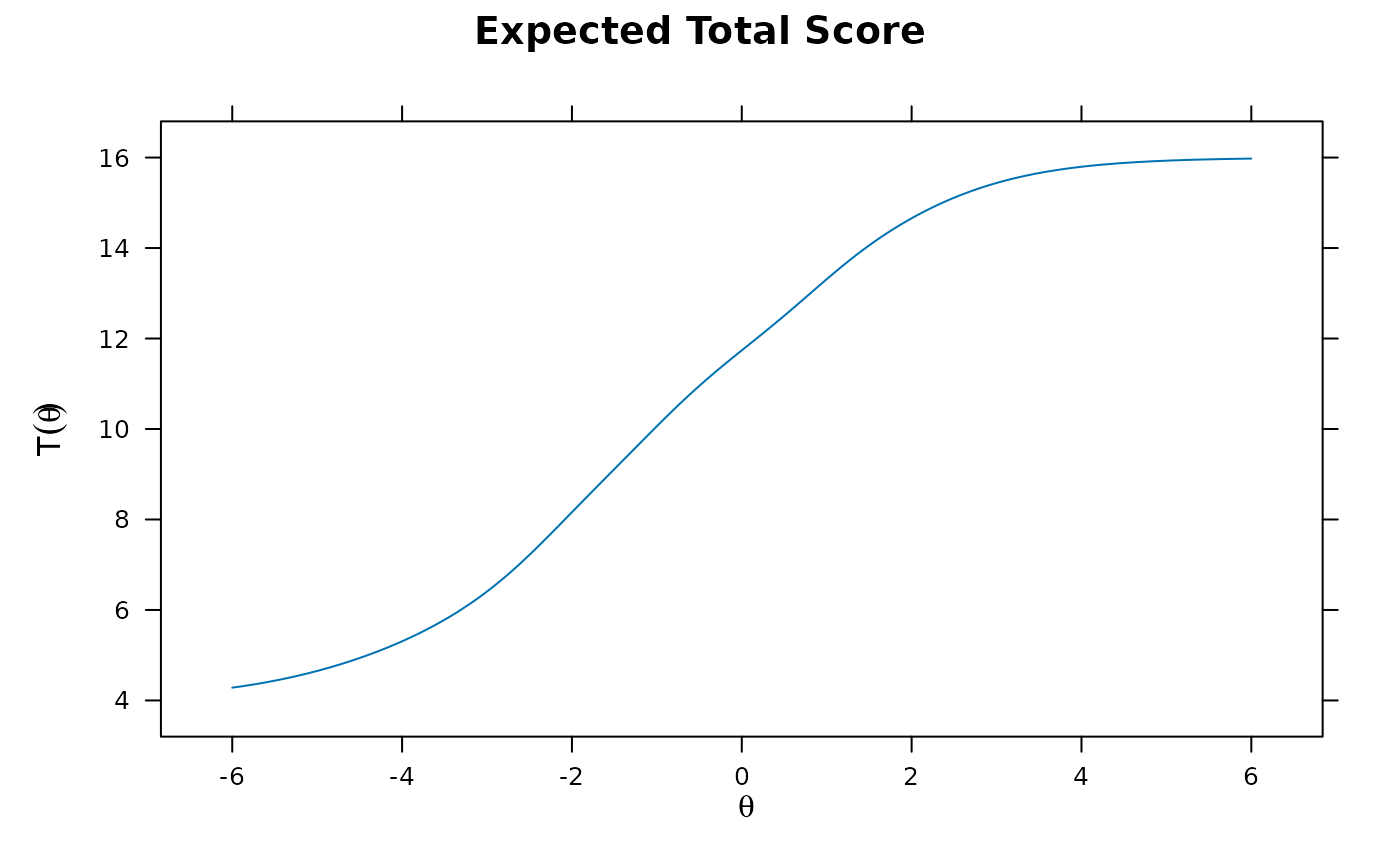 plot(x, type = 'info')
plot(x, type = 'info')
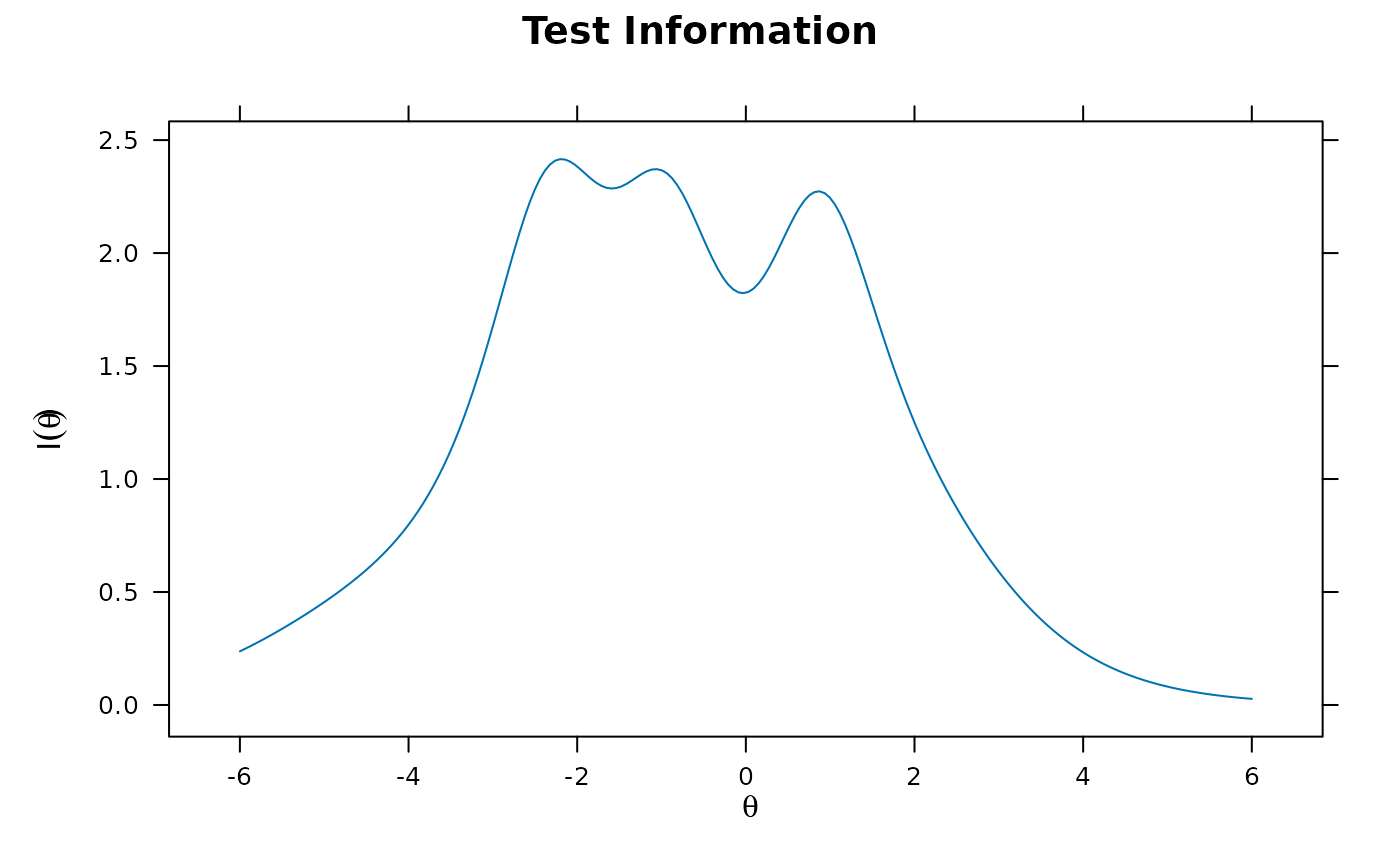 plot(x, type = 'infotrace')
plot(x, type = 'infotrace')
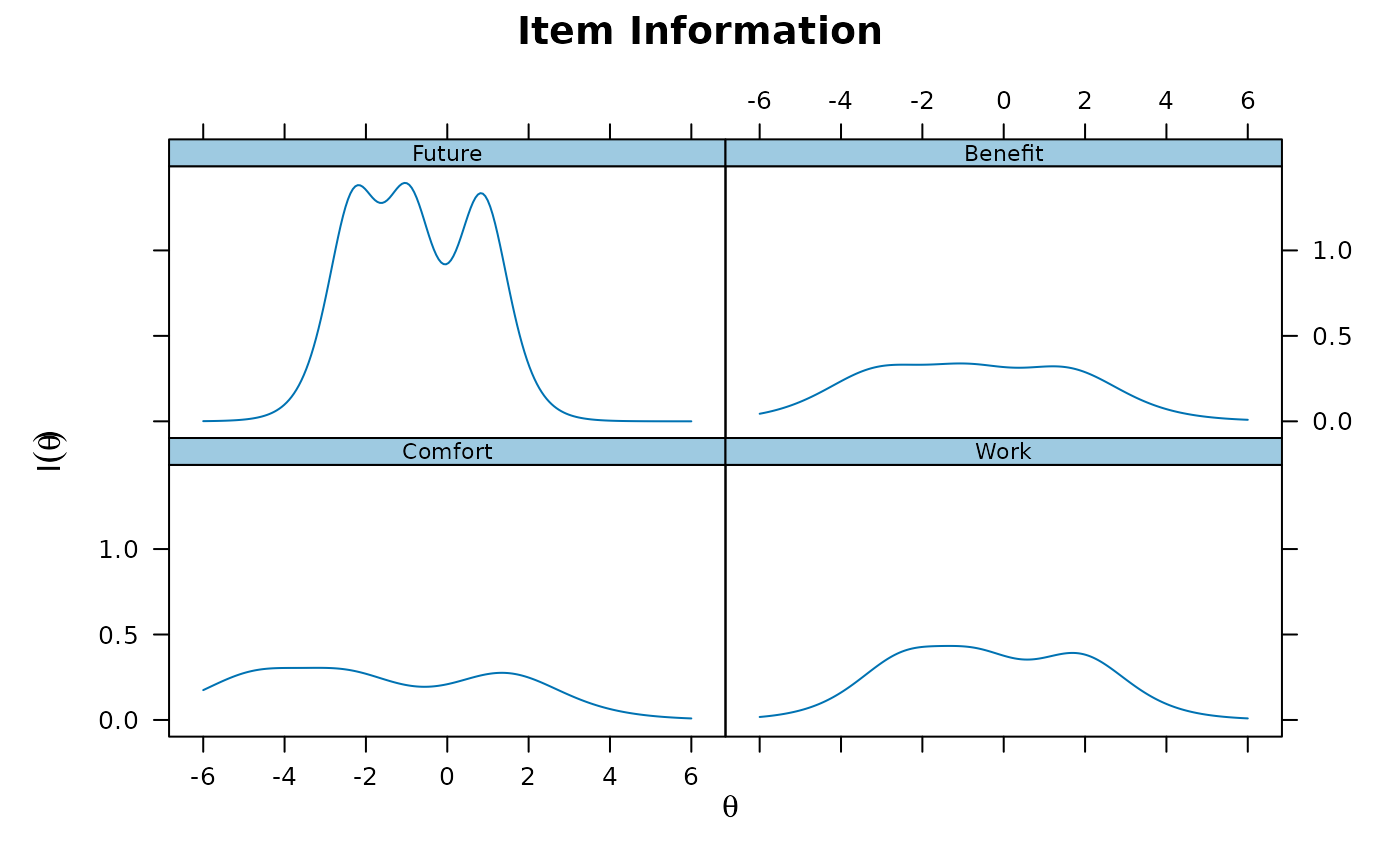 plot(x, type = 'infotrace', facet_items = FALSE)
plot(x, type = 'infotrace', facet_items = FALSE)
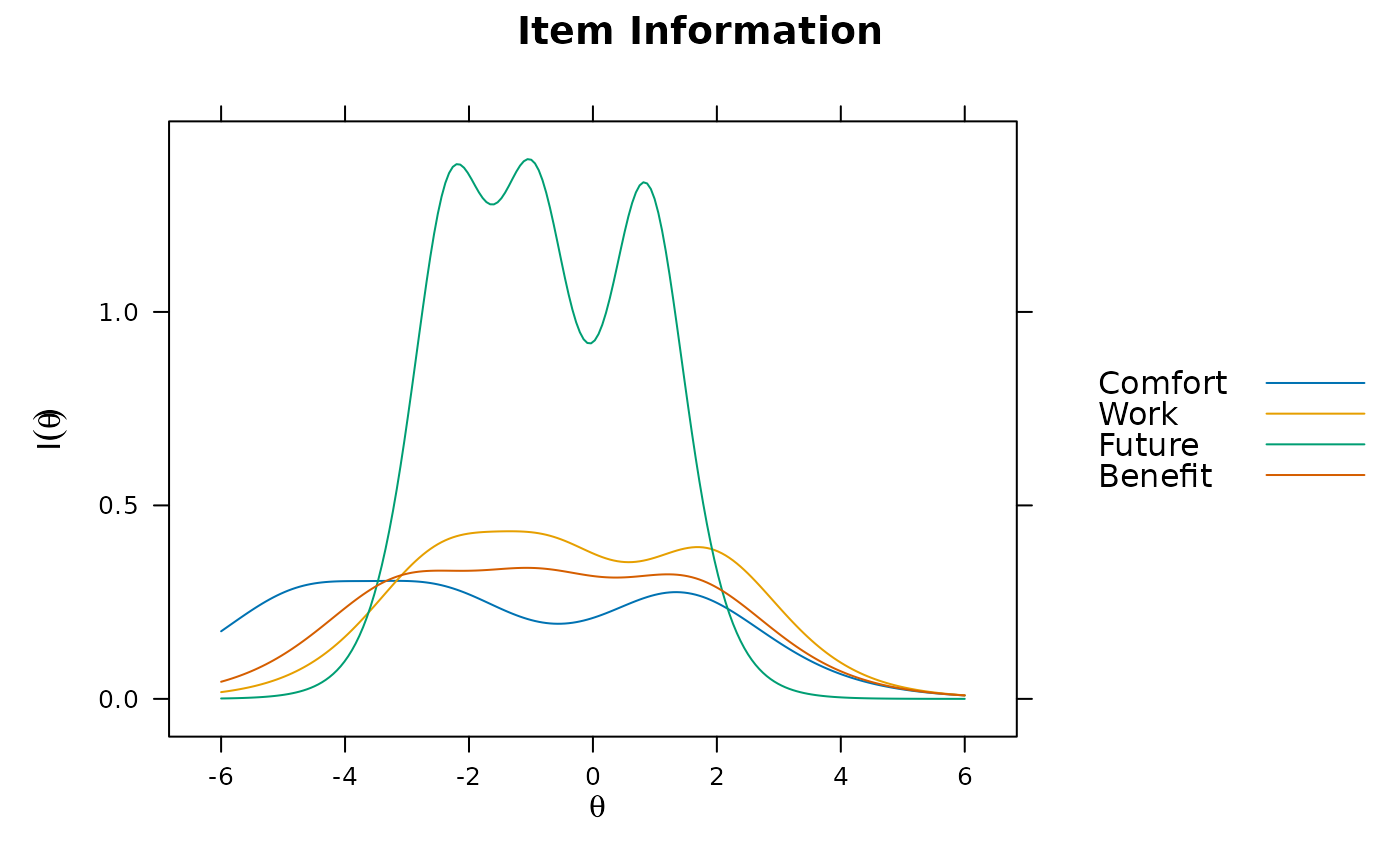 plot(x, type = 'infoSE')
plot(x, type = 'infoSE')
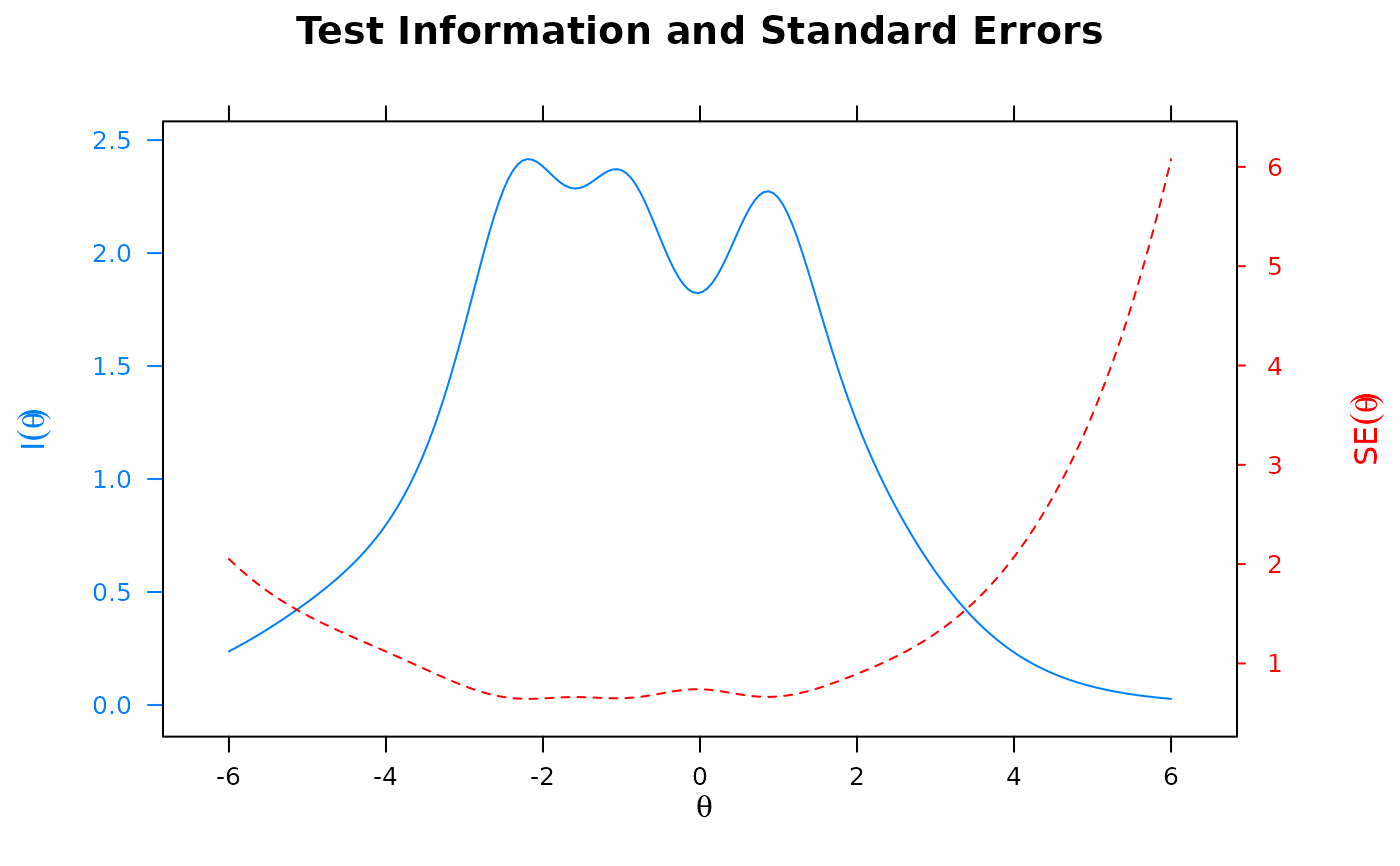 plot(x, type = 'rxx')
plot(x, type = 'rxx')
 plot(x, type = 'posteriorTheta')
plot(x, type = 'posteriorTheta')
 plot(x, type = 'gen.difficulty')
plot(x, type = 'gen.difficulty')
 # confidence interval plots when information matrix computed
plot(x)
# confidence interval plots when information matrix computed
plot(x)
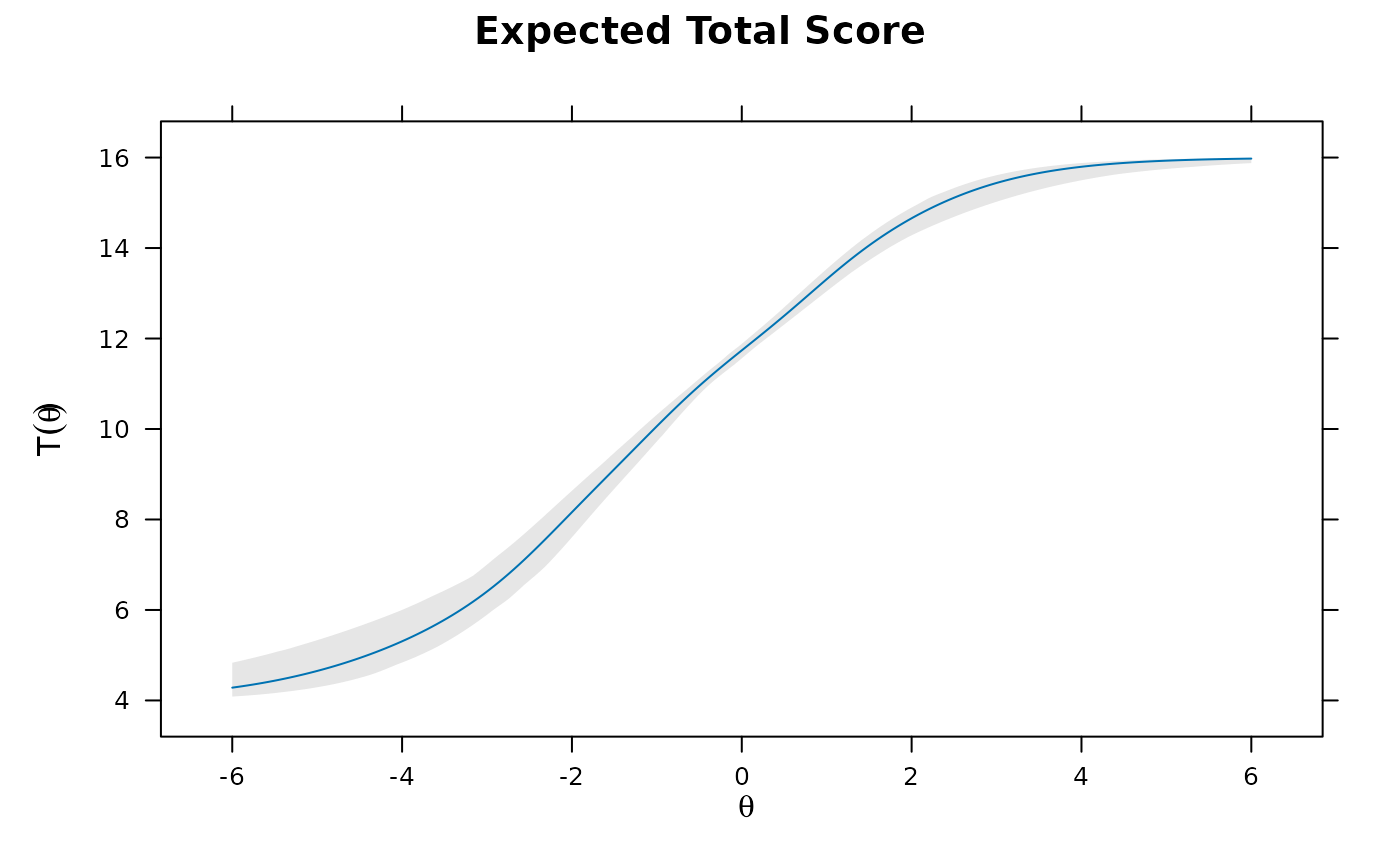 plot(x, MI=100)
plot(x, MI=100)
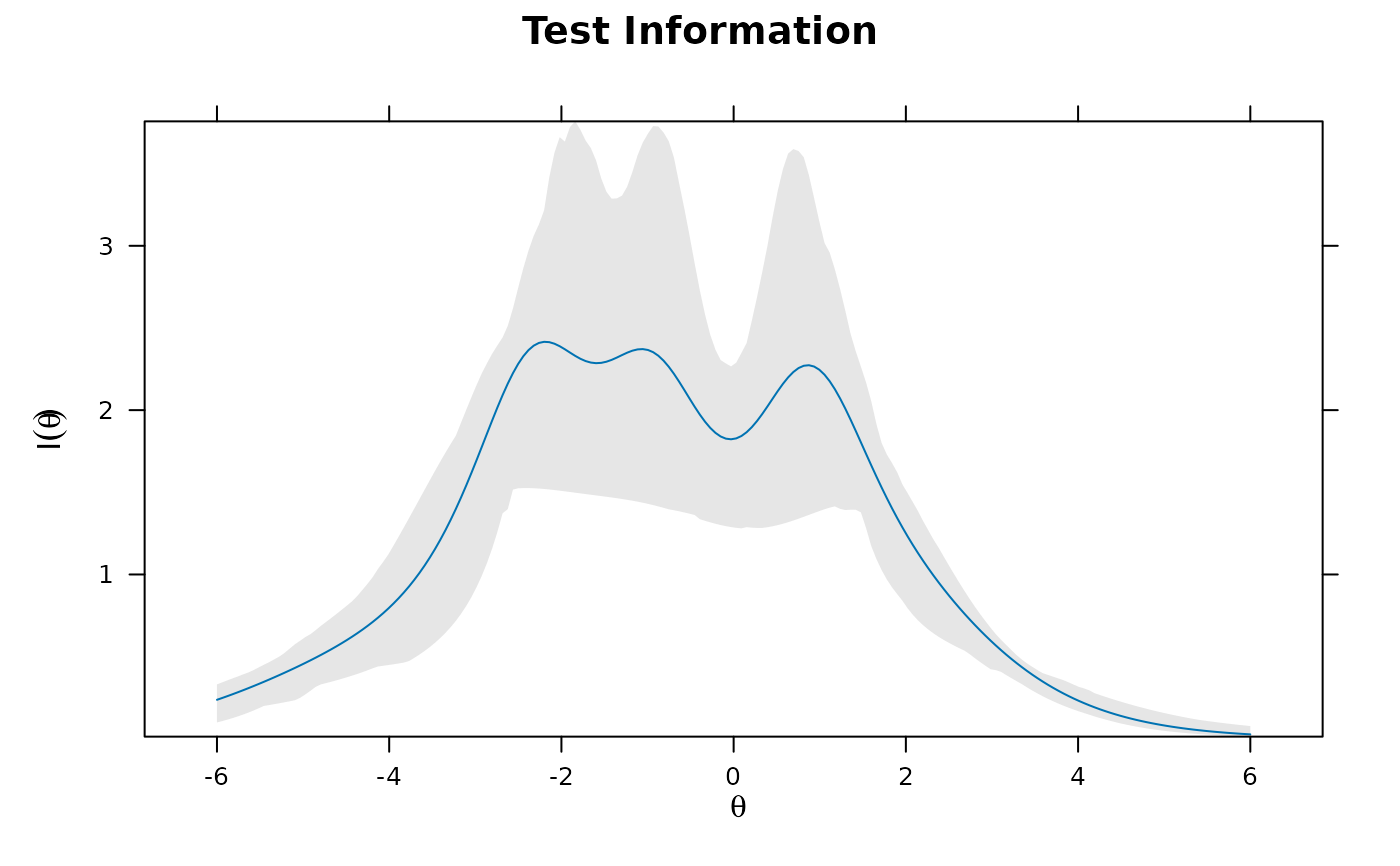 plot(x, type='info', MI=100)
plot(x, type='info', MI=100)
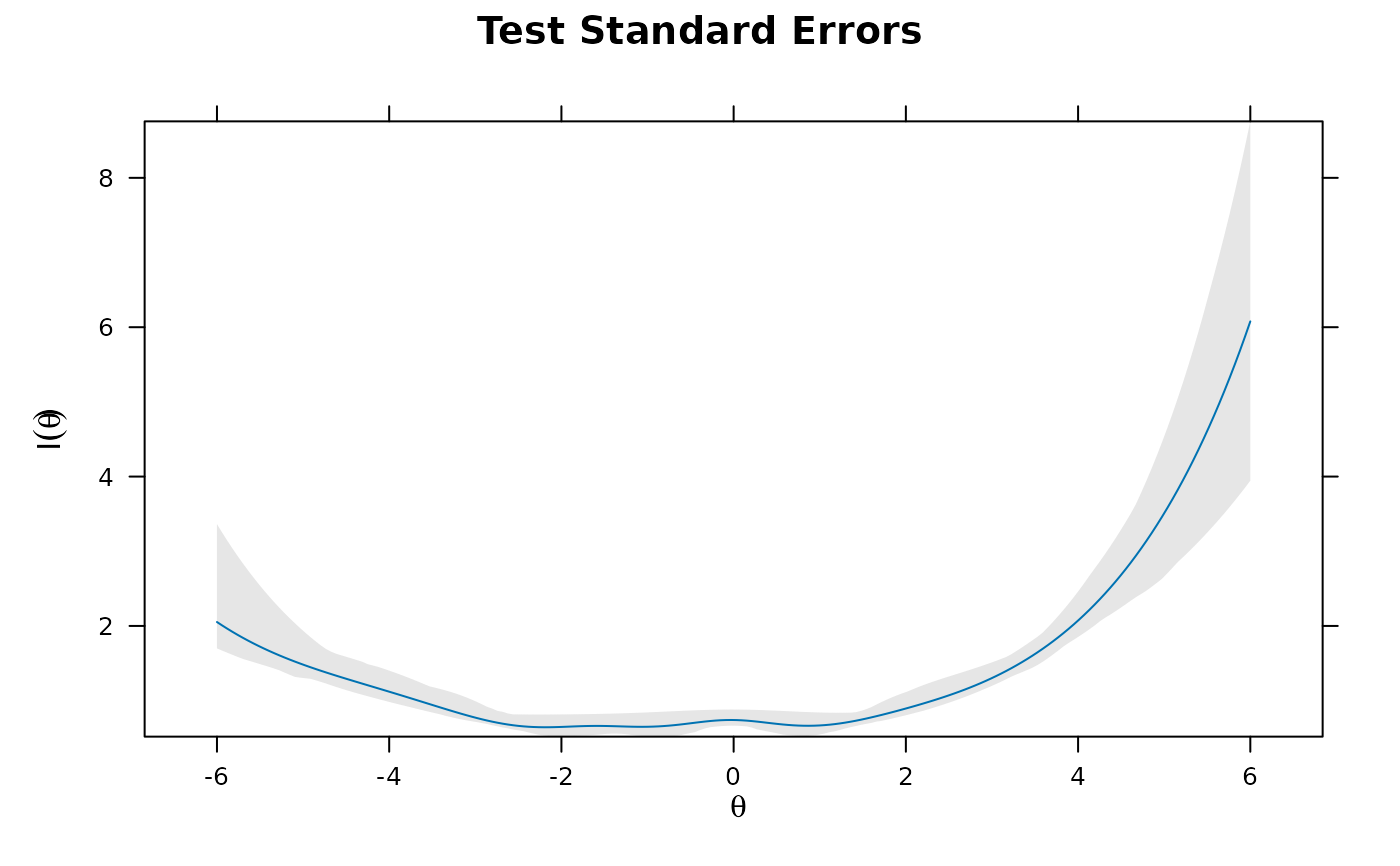 plot(x, type='SE', MI=100)
plot(x, type='SE', MI=100)
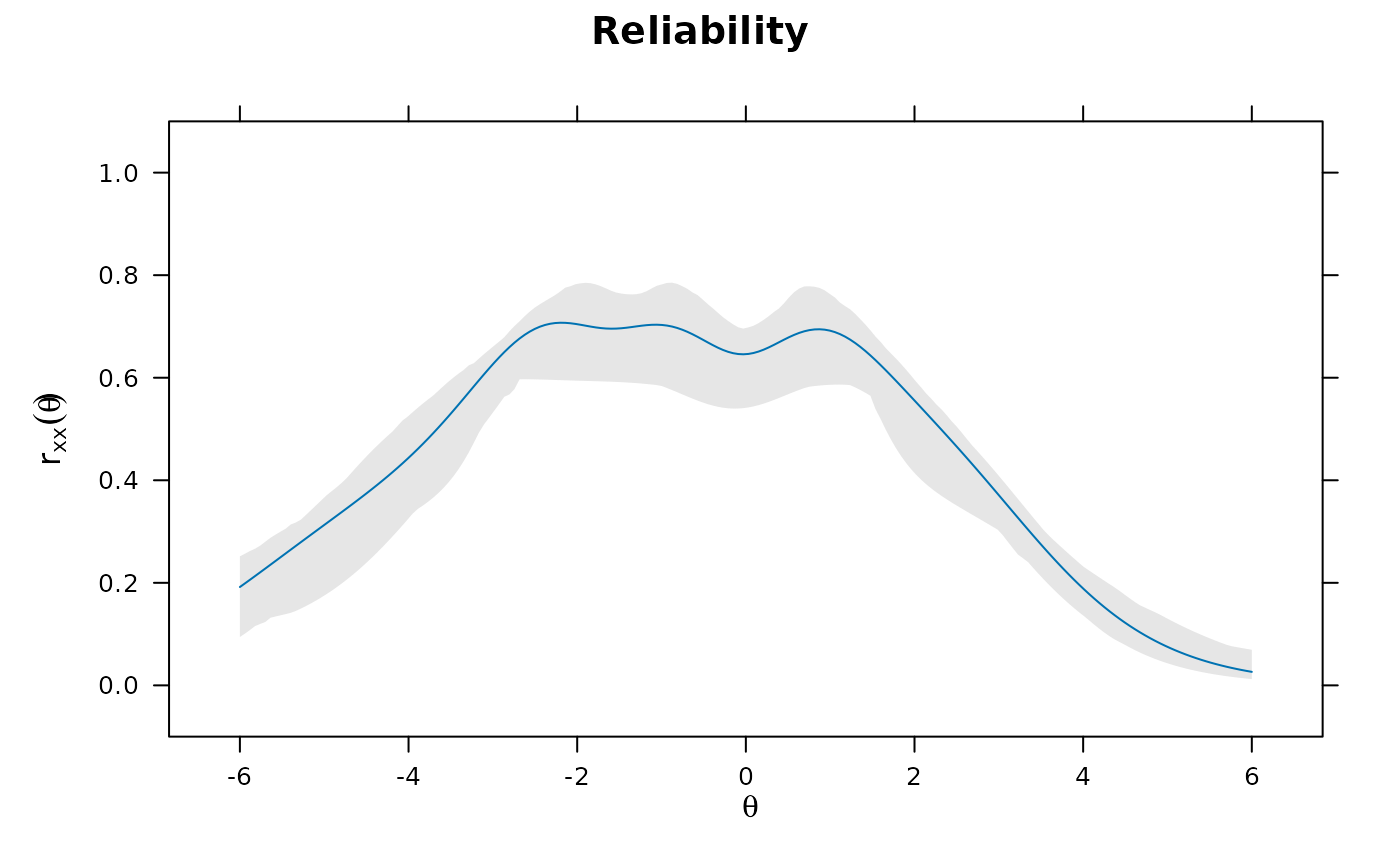 plot(x, type='rxx', MI=100)
plot(x, type='rxx', MI=100)
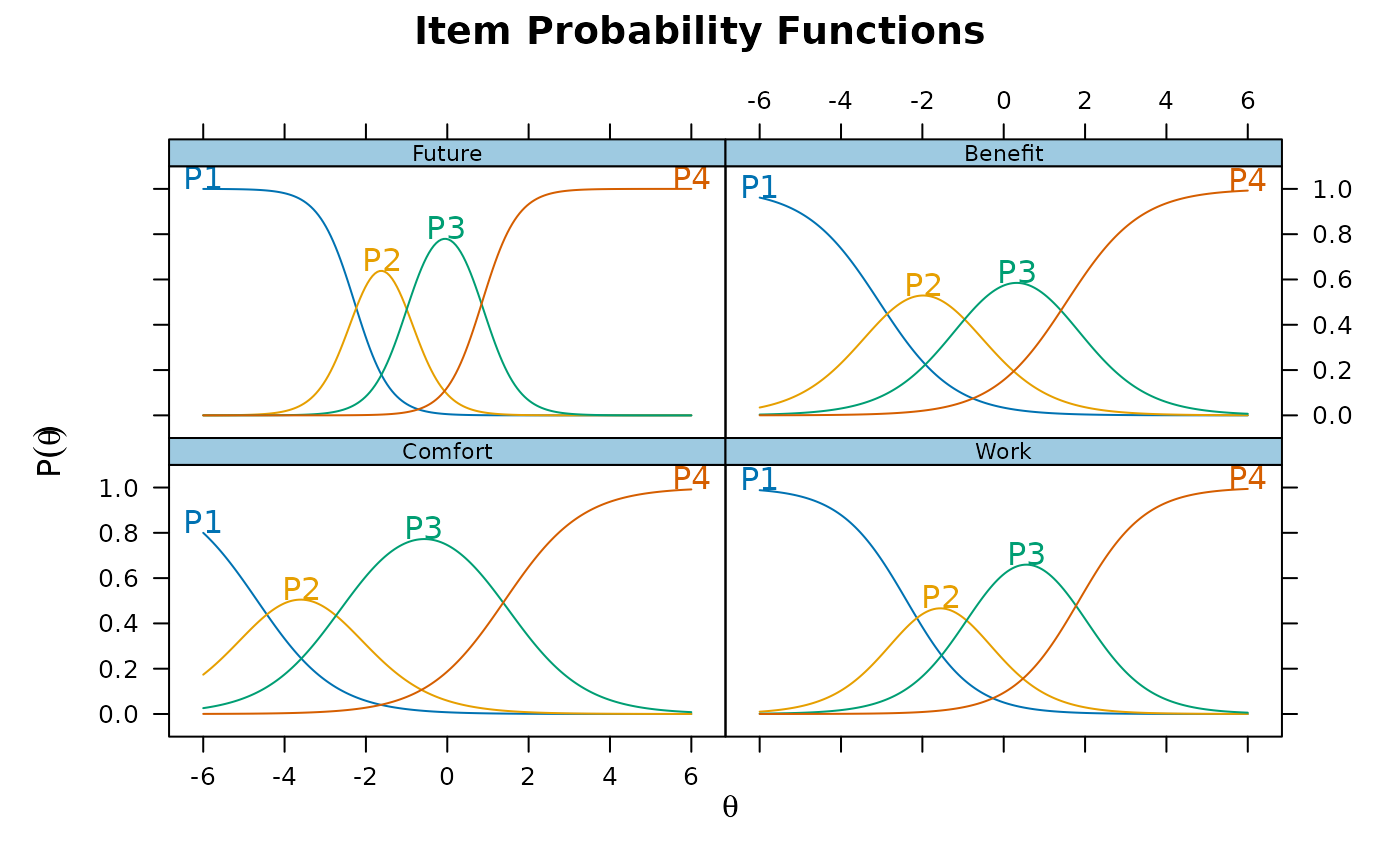 # use the directlabels package to put labels on tracelines
library(directlabels)
plt <- plot(x, type = 'trace')
direct.label(plt, 'top.points')
# use the directlabels package to put labels on tracelines
library(directlabels)
plt <- plot(x, type = 'trace')
direct.label(plt, 'top.points')
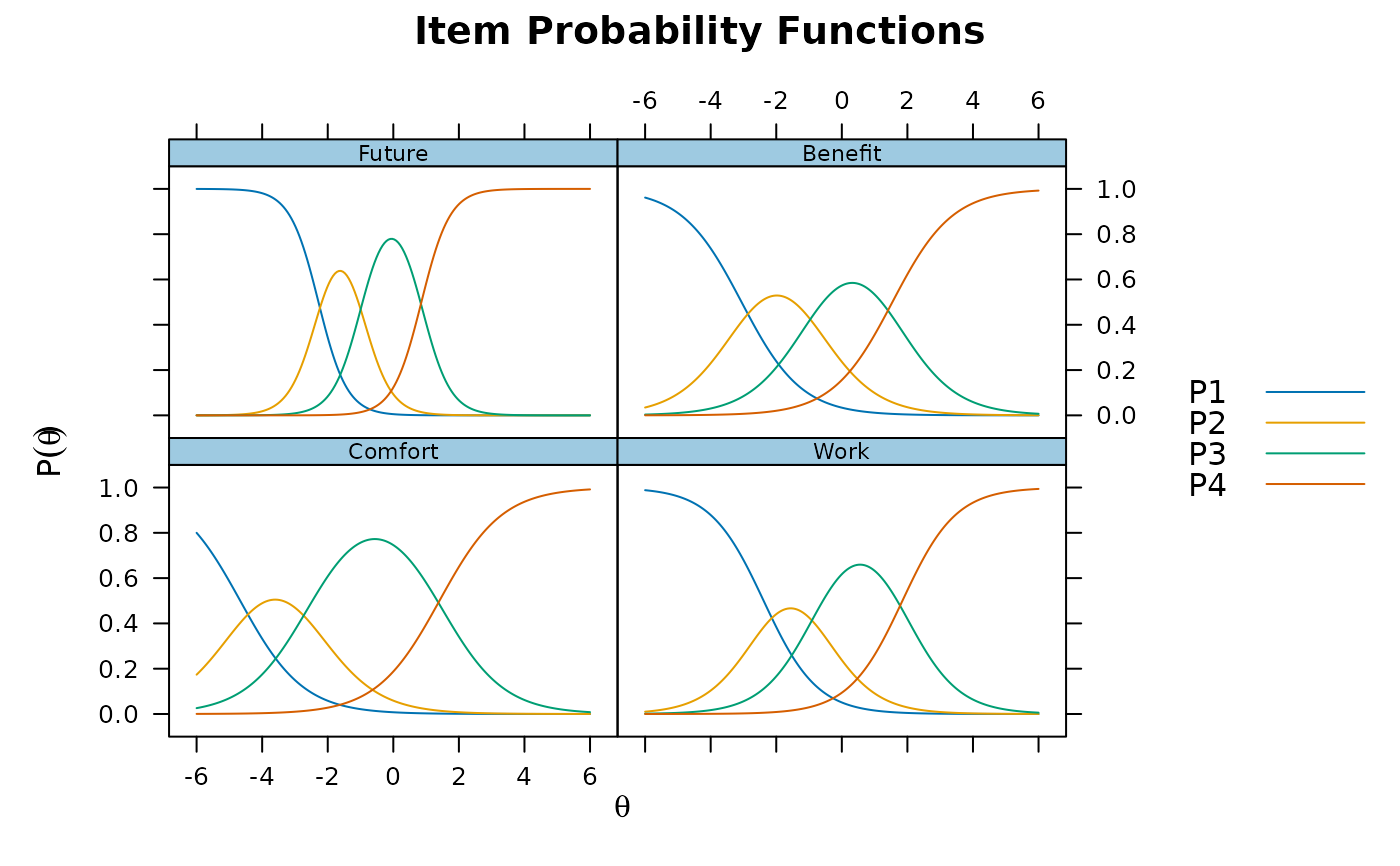 # additional modifications can be made via update().
# See ?update.trellis for further documentation
plt
# additional modifications can be made via update().
# See ?update.trellis for further documentation
plt
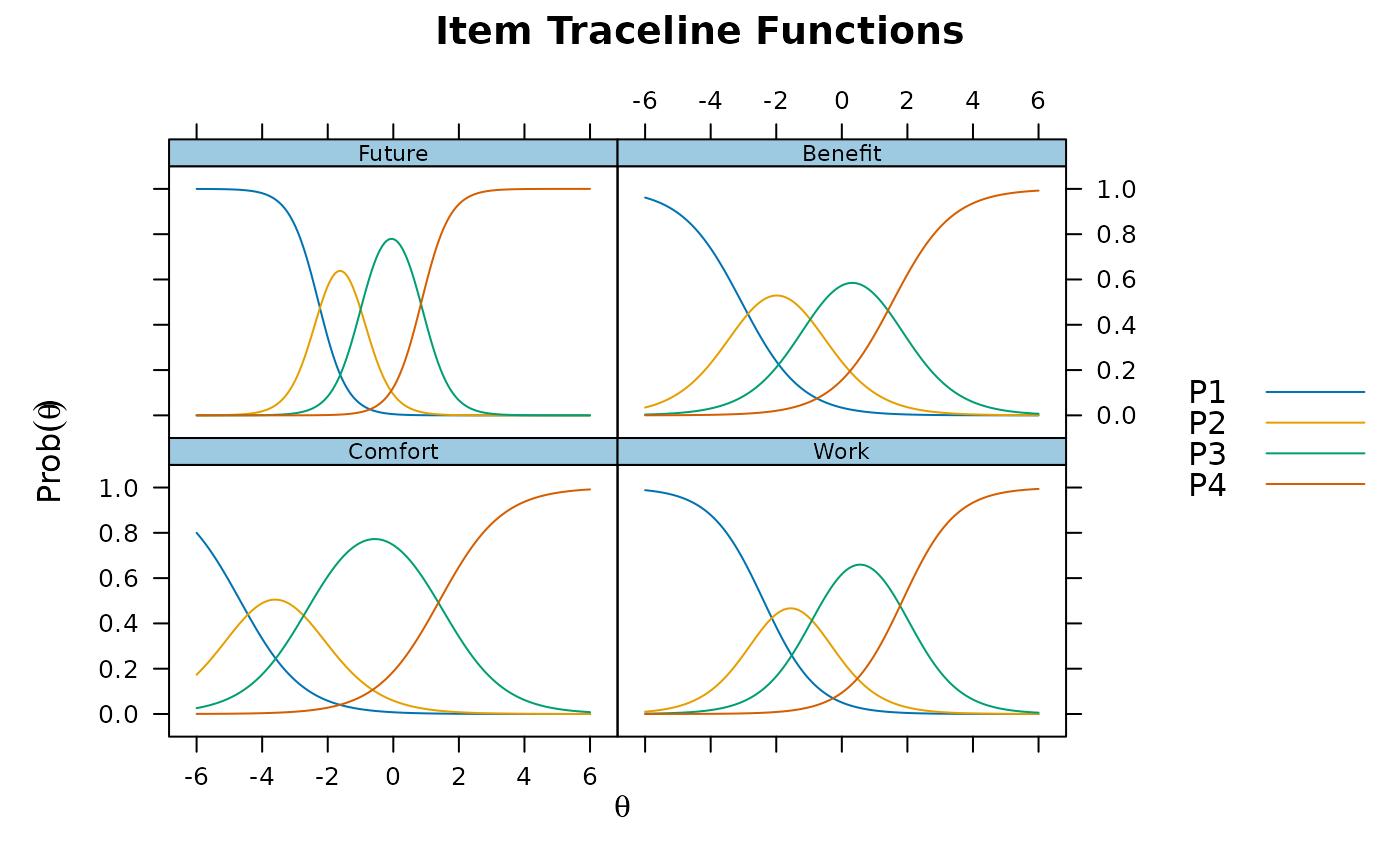 update(plt, ylab = expression(Prob(theta)),
main = "Item Traceline Functions") # ylab/main changed
update(plt, ylab = expression(Prob(theta)),
main = "Item Traceline Functions") # ylab/main changed
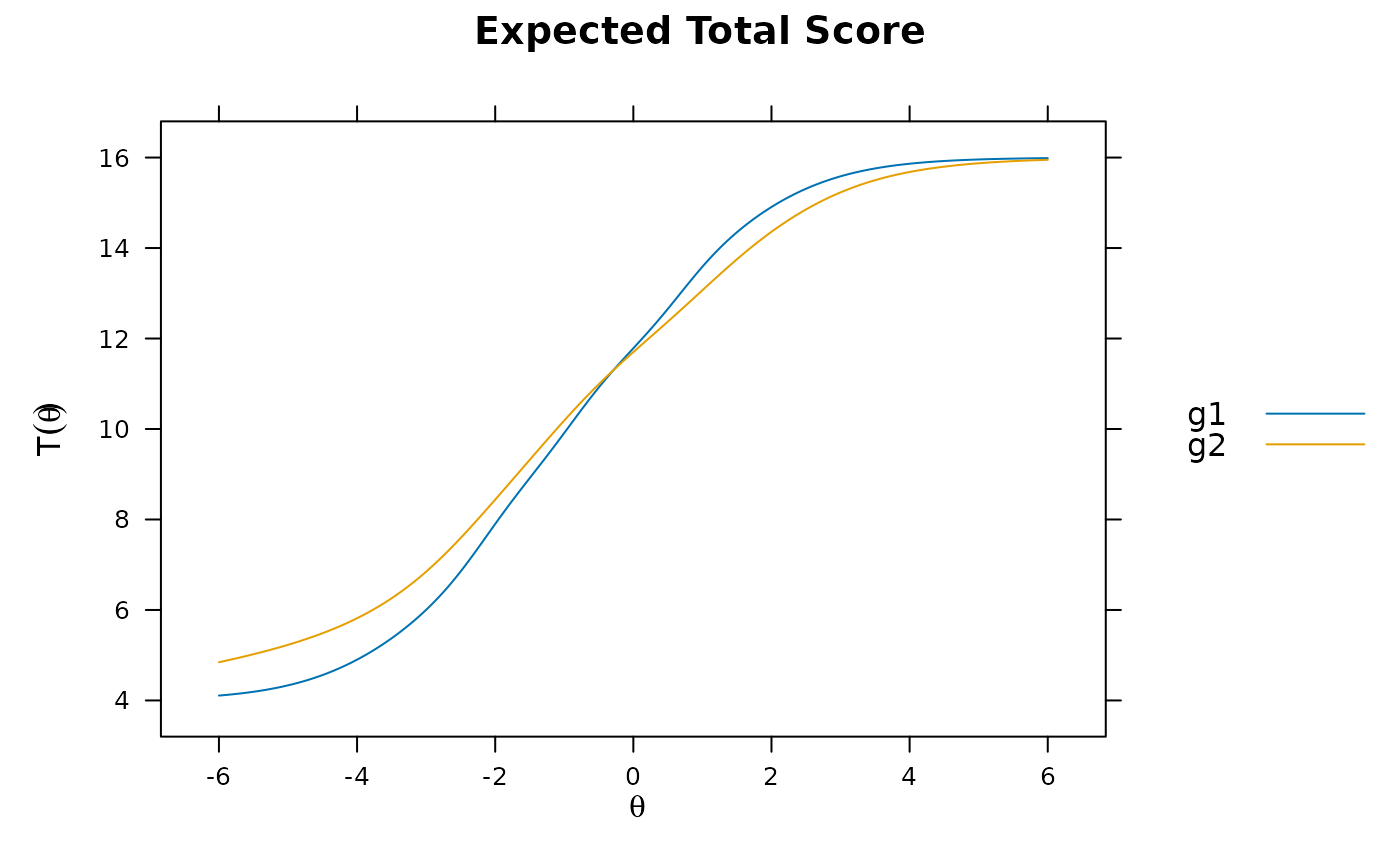 set.seed(1234)
group <- sample(c('g1','g2'), nrow(Science), TRUE)
x2 <- multipleGroup(Science, 1, group)
plot(x2)
set.seed(1234)
group <- sample(c('g1','g2'), nrow(Science), TRUE)
x2 <- multipleGroup(Science, 1, group)
plot(x2)
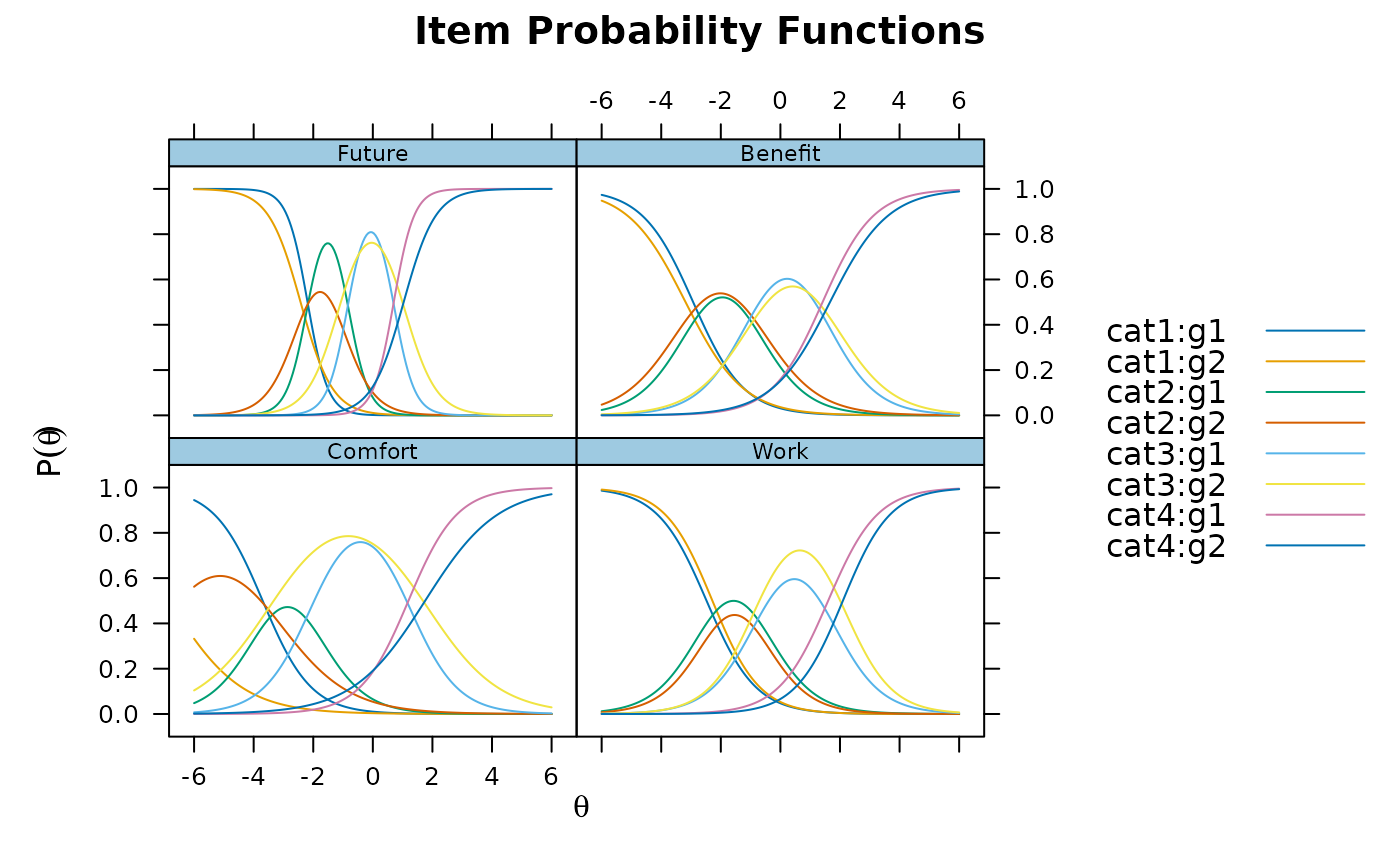 plot(x2, type = 'trace')
plot(x2, type = 'trace')
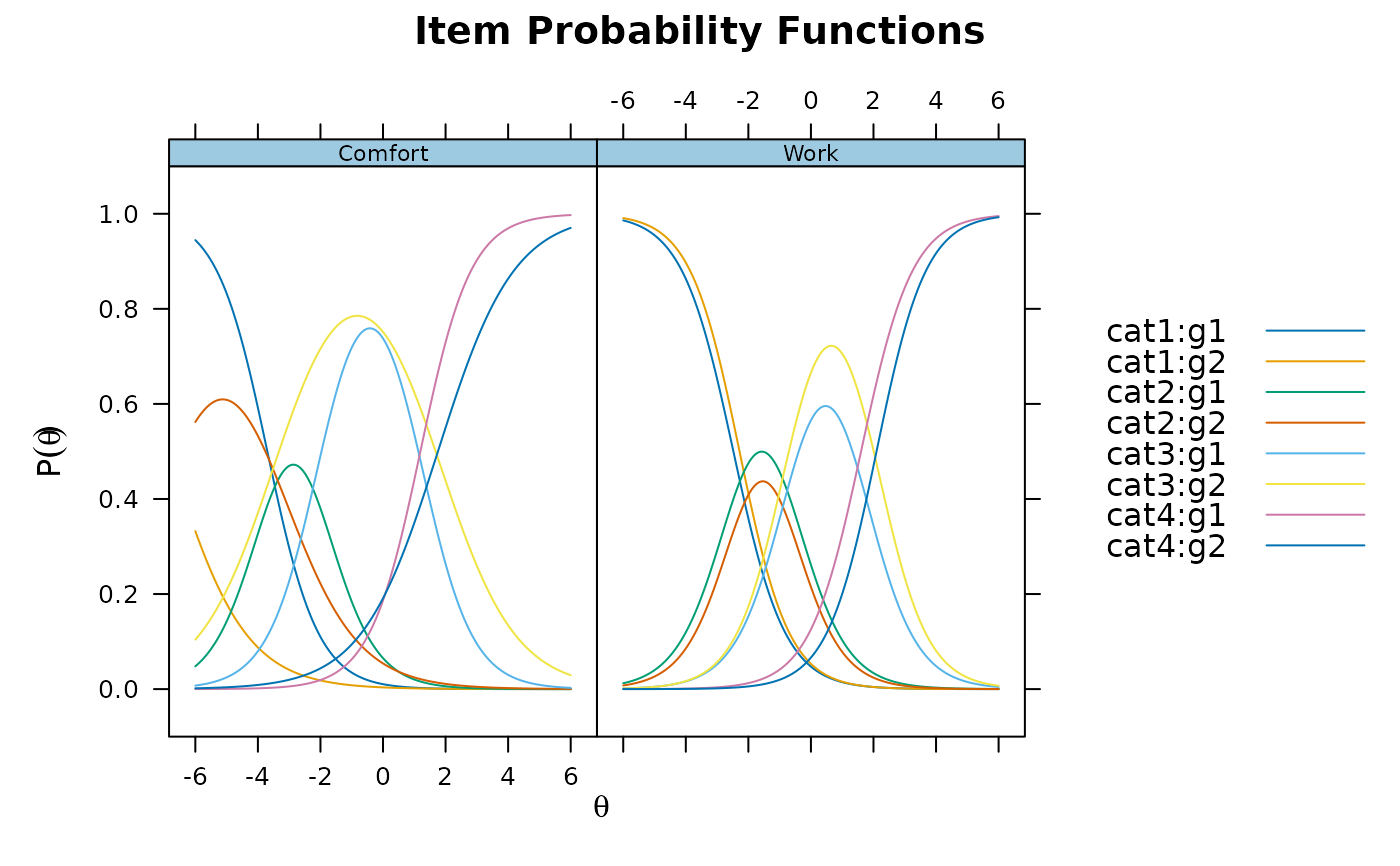 plot(x2, type = 'trace', which.items = 1:2)
plot(x2, type = 'trace', which.items = 1:2)
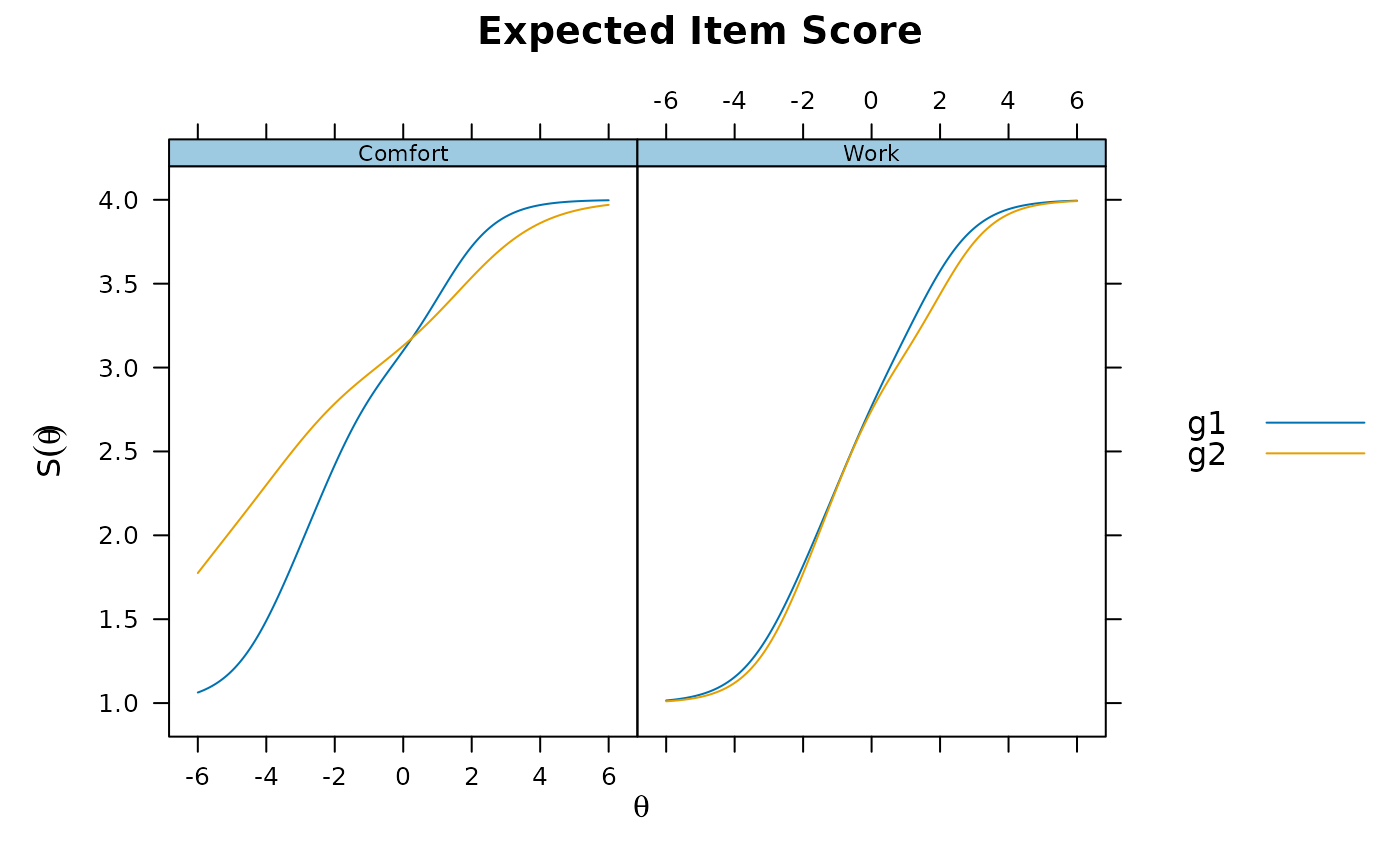 plot(x2, type = 'itemscore', which.items = 1:2)
plot(x2, type = 'itemscore', which.items = 1:2)
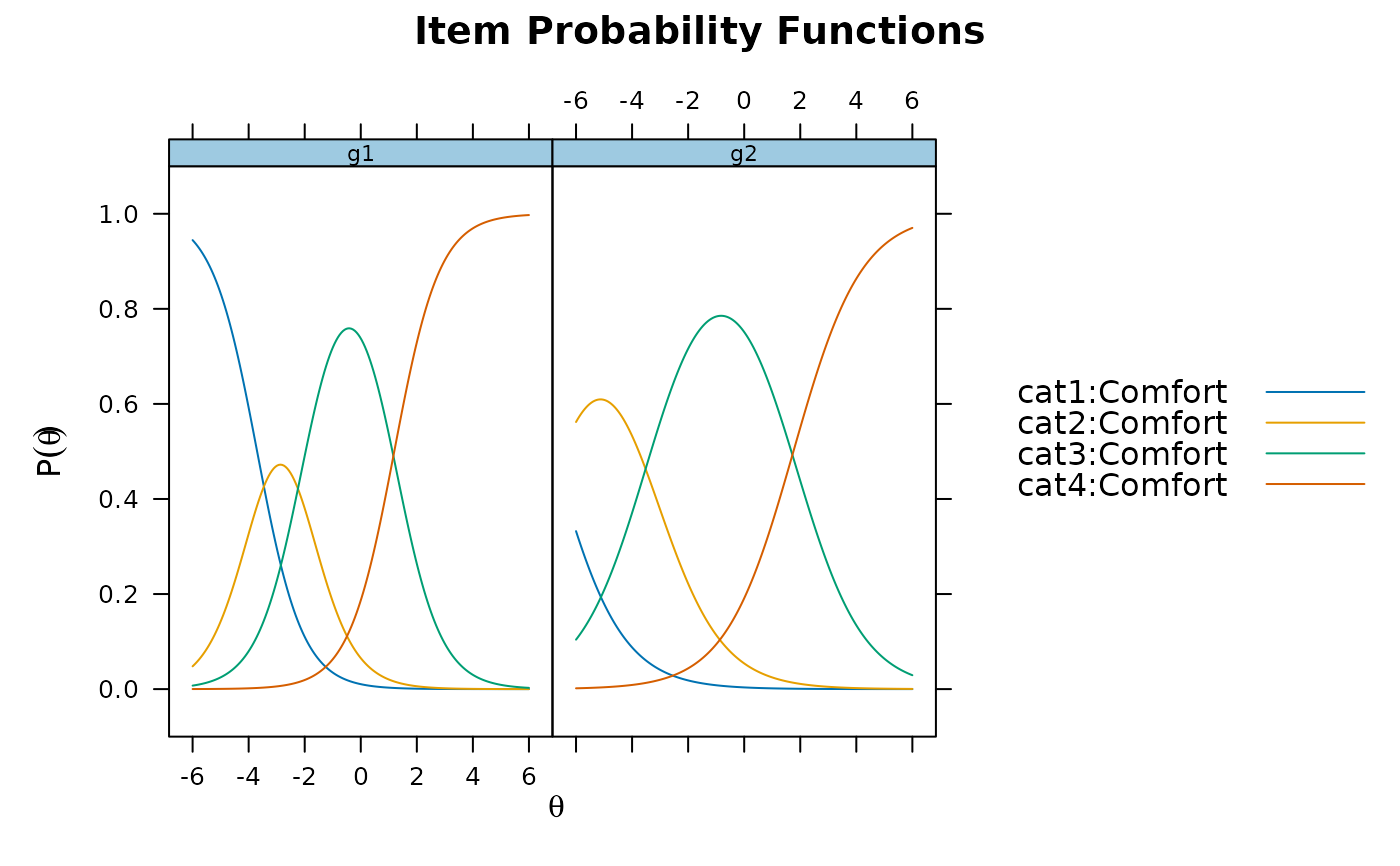 plot(x2, type = 'trace', which.items = 1, facet_items = FALSE) #facet by group
plot(x2, type = 'trace', which.items = 1, facet_items = FALSE) #facet by group
 plot(x2, type = 'info')
plot(x2, type = 'info')
 plot(x2, type = 'gen.difficulty')
plot(x2, type = 'gen.difficulty')
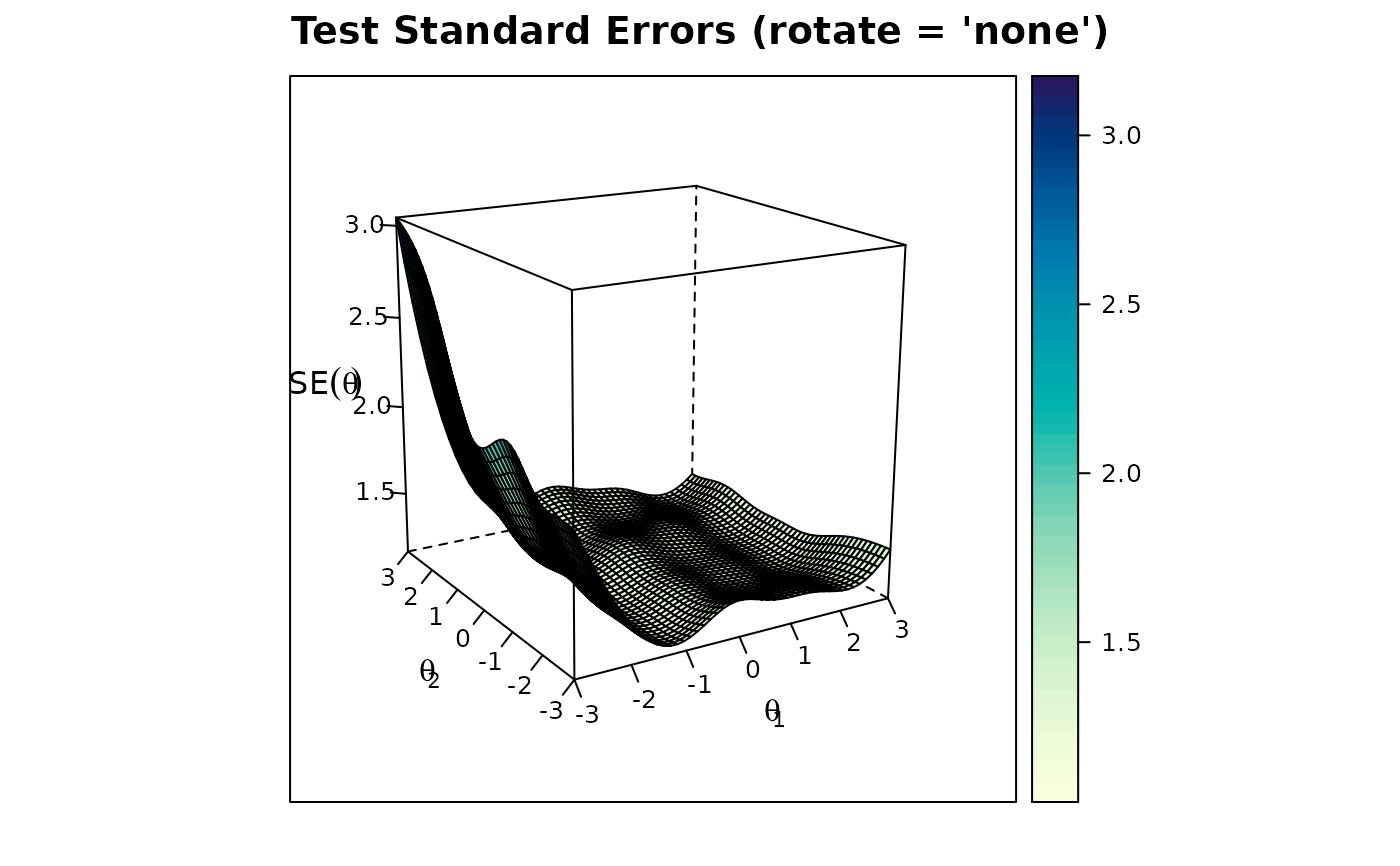 x3 <- mirt(Science, 2)
plot(x3, type = 'info')
x3 <- mirt(Science, 2)
plot(x3, type = 'info')
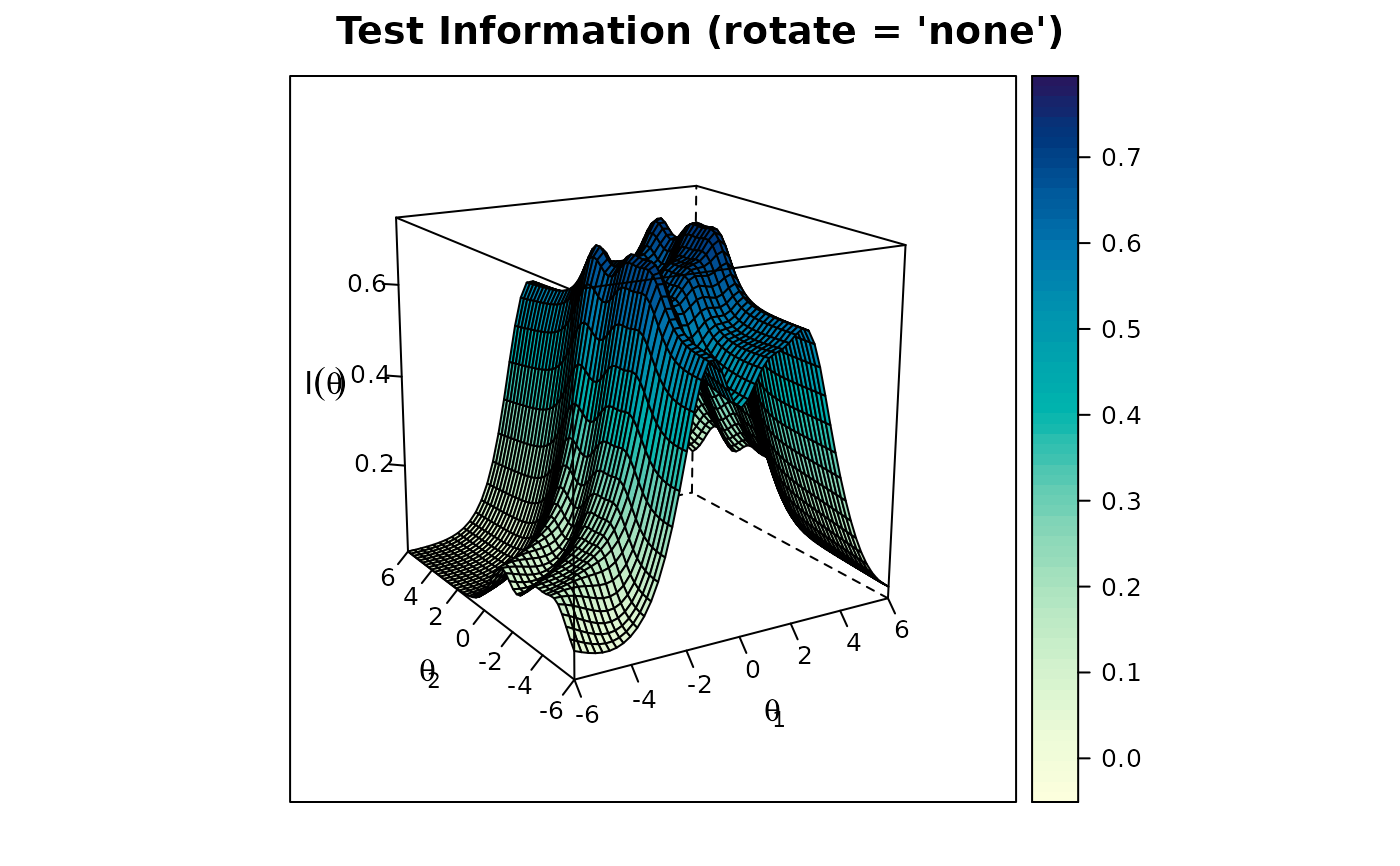 plot(x3, type = 'SE', theta_lim = c(-3,3))
plot(x3, type = 'SE', theta_lim = c(-3,3))
 # }
# }